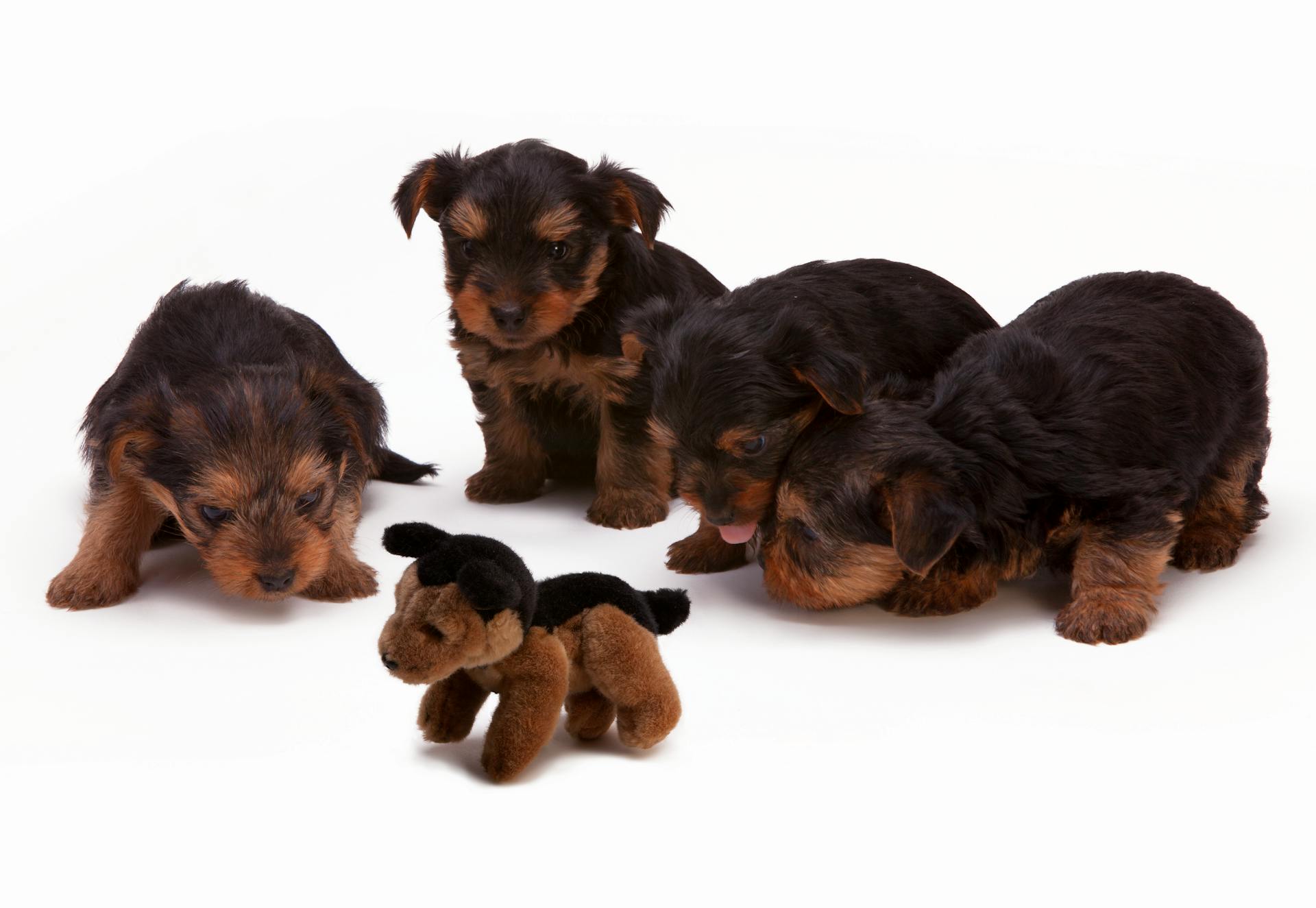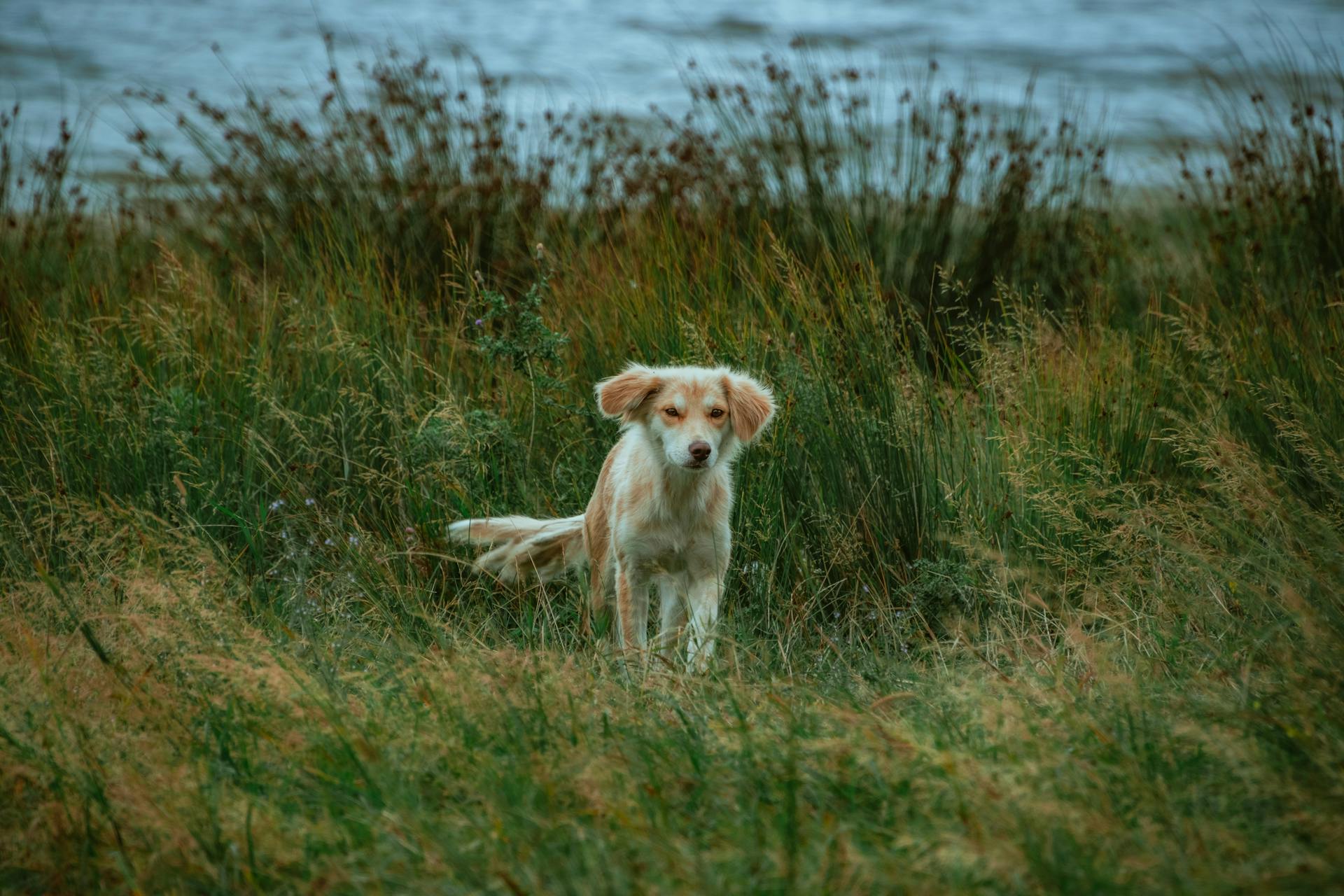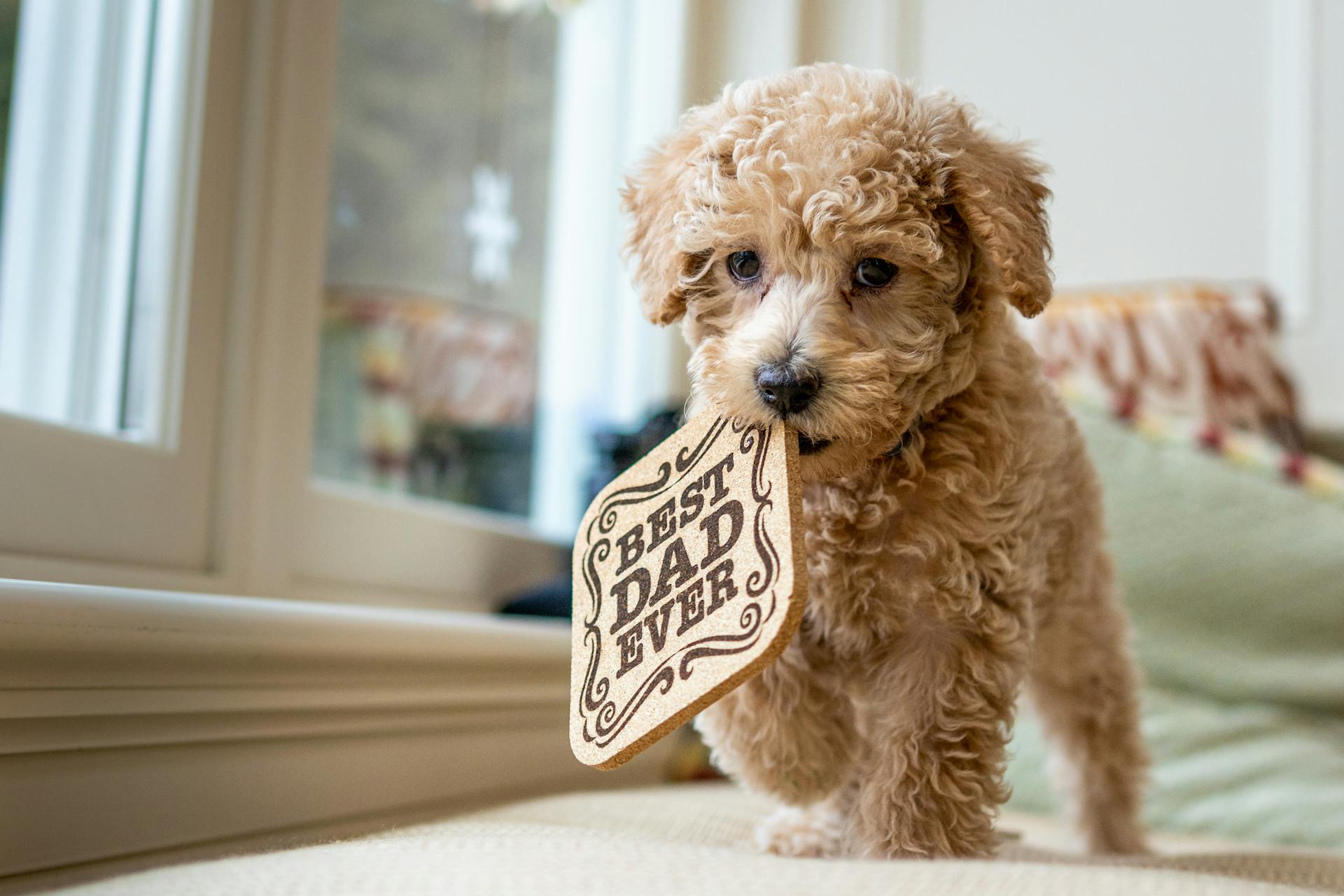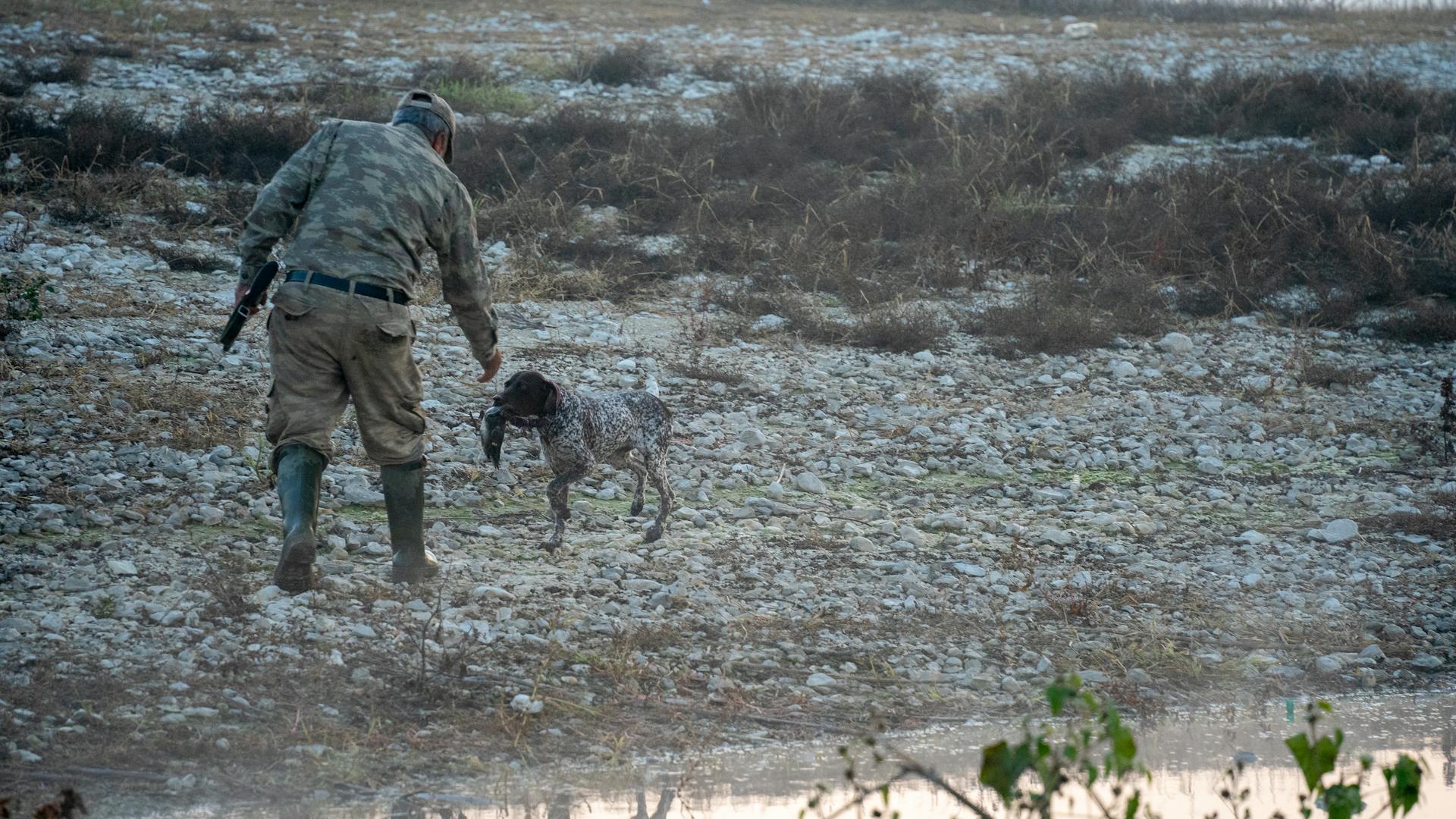
Pudelpointer breeders are passionate about this unique breed, and for good reason. The Pudelpointer is a versatile hunting dog that excels in various terrains and conditions.
They are known for their intelligence, athleticism, and strong prey drive. This combination makes them an excellent choice for active families or hunters.
Pudelpointers are generally medium-sized dogs, with males weighing between 65-80 pounds and standing 24-27 inches tall at the shoulder. Their coat is a thick, water-resistant double coat that requires regular grooming.
Their intelligence and trainability make them a joy to work with, but they can be strong-willed at times, requiring consistent and positive reinforcement training.
Breed Characteristics
The Pudelpointer breed is a versatile hunting dog, bred by crossing the Poodle and Pointer, exceling in both upland and waterfowl hunting.
Its intelligence and trainability make it a valuable hunting companion, capable of tracking with a keen sense of smell and adapting to various terrains.
A Pudelpointer's medium to large size features a well-muscled and athletic build, suitable for various hunting tasks.
Here are some key breed characteristics:
- Versatile hunting ability
- Exceptional intelligence and trainability
- Keen sense of smell
- Medium to large size
- Friendly disposition
- Eager to please
- Balanced temperament
Appearance
The Pudelpointer's appearance is quite unique and can be a bit deceiving at first glance. They often appear a little scruffy, but that's because of their double coat, which can be wiry, rough, or smooth, depending on the dog.
Their coat is one of their most distinctive features, and it's not uncommon to see them with deep brown or black fur and the occasional patch of white. The short-to-medium-sized ears are another characteristic that's inherited from their English pointer ancestors.
The Pudelpointer's eyes are deep brown, giving them a vigilant but calm gaze. This is a breed that's meant to be working, so it's no surprise that they often appear ready-to-work, with an alert expression that's hard to ignore.
If you spot your Pudelpointer in an alert stance with their front paw lifted, that's a sign of their strong hunting instinct kicking in. This is completely normal behavior for this breed, but it's essential to make sure they're well-trained so they don't take off without permission.
The Pudelpointer's size is also worth noting, as they typically stand between 22-27 inches tall and weigh between 40-65 pounds. Female Pudelpointers are usually a bit smaller than their male counterparts.
Character of the
Pudelpointers are known for their highly cooperative attitude and ability to bond closely with their owners. They're a bit mellower around the house, making them a great choice for families.
One of the standout characteristics of Pudelpointers is their playful and almost clownish personality. They're always up for a good time and love to have fun.
Pudelpointers are level-headed and easy to train, making them a valuable asset for hunters. They're also very adaptable and can thrive in a variety of environments.
Here are some key characteristics of Pudelpointers:
- Highly cooperative and bond closely with owners
- Playful and almost clownish personality
- Level-headed and easy to train
- Very adaptable
As a breed, Pudelpointers are known for their friendly and sociable nature, making them a great choice for families. They're also eager to please their owners, which makes training a breeze.
Care and Training
Pudelpointers are generally low-maintenance dogs when it comes to coat care. Their brown coat sheds very little, likely due to their German hunting poodle lineage.
A weekly combing session and occasional bath will keep your pup looking their best. Their short outercoat and longer undercoat repel water with just a quick shake.
To keep their mouth healthy, owners should brush their dog's teeth regularly. Pudelpointers are easily trained with positive reinforcement techniques, making them a great choice for hunters with allergies.
Focusing on basic cues like standing still on command and coming back when called will get you a long way in obedience training. Just spend 15 minutes or more per day working on it, and you'll have a well-behaved companion.
Training
Training a Pudelpointer requires patience and consistency. They are generally eager-to-please dogs, but some can have a stubborn streak.
Pudelpointers can handle moderate training methods, but they do need reminders occasionally. Once trained, they retain what they've learned with minimal reminders.
Positive reinforcement training is key to unlocking their intelligence and trainability. Rewarding them with treats and praise for desired behavior is an effective way to encourage good habits.
Their strong hunting instinct makes them enthusiastic about playing fetch, both on land and in water. They'll need plenty of exercise and mental stimulation to keep them happy and healthy.
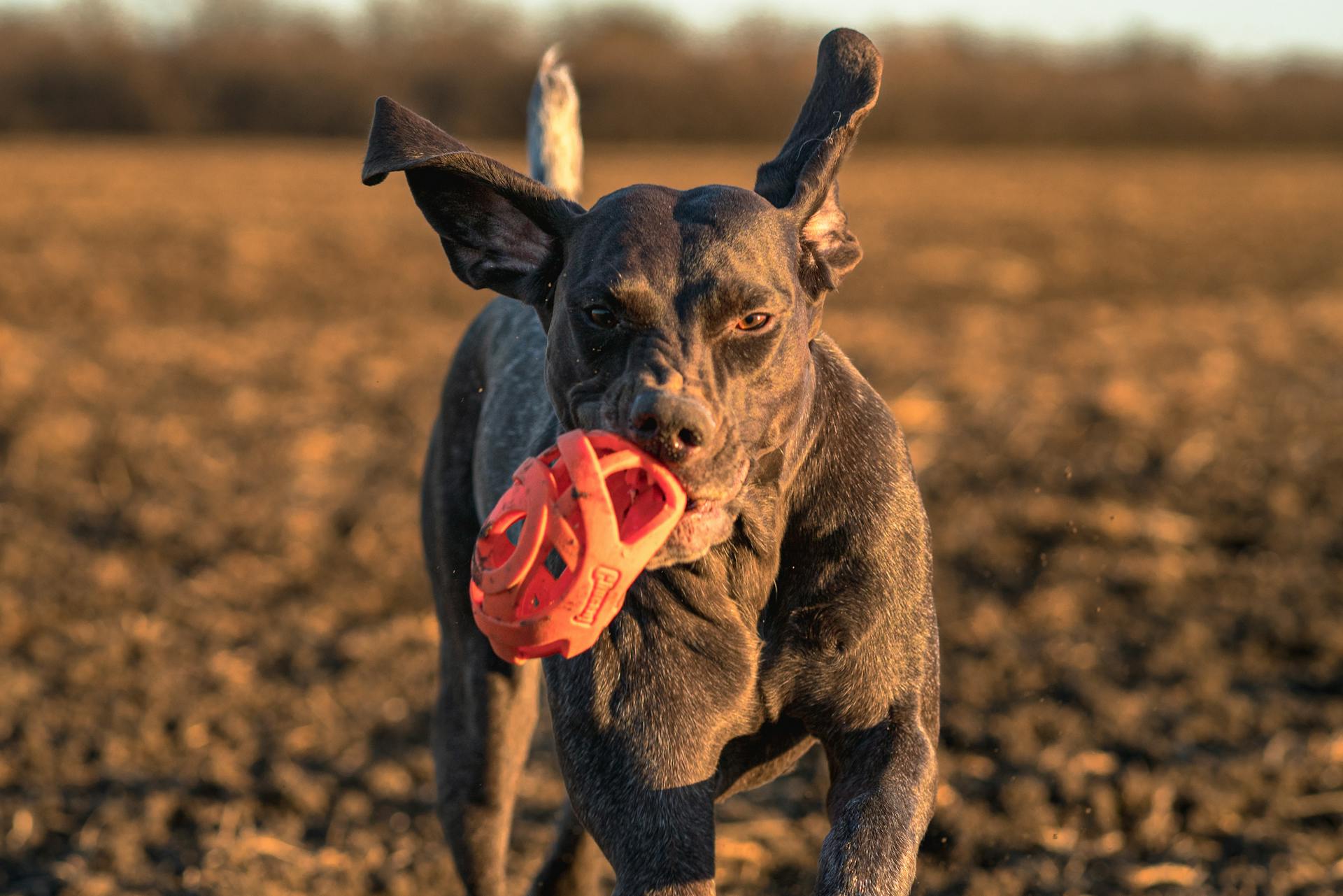
Here are some essential training tips for Pudelpointers:
Remember, Pudelpointers are athletes and need to be exercised regularly. With patience, consistency, and positive reinforcement, you can develop a strong bond with your Pudelpointer and help them become a well-behaved member of your family.
Exercise Needs
Exercise needs vary depending on the age and breed of your dog. For example, puppies require more exercise than adult dogs, with a minimum of 18 minutes of playtime per day.
Dogs that are overweight or obese may need more exercise to help them lose weight, but it's essential to consult with a veterinarian before starting any new exercise program.
Small breeds, such as the Chihuahua, require shorter, more frequent exercise sessions, while larger breeds, like the Labrador Retriever, need more extensive exercise routines.
Dogs that are high-energy breeds, such as Border Collies, require at least 90 minutes of exercise per day to keep them happy and healthy.
Health
The Pudelpointer breed is generally considered to be a healthy breed, but like all dogs, they can be prone to certain health issues. Hip dysplasia and epilepsy have been reported in some cases, and the breed's FCI standard specifically emphasizes the importance of preventing these conditions.
As a responsible breeder, it's essential to be aware of these potential health issues. Some Pudelpointers may be more susceptible to certain conditions due to their genetic makeup.
Hip dysplasia is a condition where the hip joint doesn't develop properly, which can range from mild to severe cases. In severe cases, surgical intervention may be necessary.
Pudelpointers can also be affected by various cancers, including mammary tumors, mast cell tumors, and lymphosarcoma. These conditions are more common in certain breeds, including the German Shorthaired Pointer (GSP), from which the Pudelpointer was developed.
Here are some common health issues that can affect Pudelpointers:
- Hip Dysplasia: A condition in which the hip joint does not develop properly.
- Cancer: GSPs are reported to have a higher incidence of certain cancers such as mammary tumors, mast cell tumors, and lymphosarcoma.
- Von Willebrand’s Disease: A blood disorder affecting the clotting process, characterized by reduced levels of von Willebrand factor.
- Gastric Dilatation-Volvulus (GDV): A life-threatening condition that can occur in deep-chested breeds like GSPs.
- Cryptorchidism: A medical condition in male mammals, including dogs and cats, where one or both testicles fail to descend into the scrotum.
By being aware of these potential health issues, you can take steps to prevent or manage them, ensuring that your Pudelpointer lives a happy and healthy life.
Feeding and Nutrition
Feeding your Pudelpointer the right way is crucial to their health and happiness. Pudelpointers are large breeds with high energy levels, so they need a diet that matches their needs.
Measure your Pudelpointer's food carefully to avoid overfeeding, which can lead to weight gain. Leaving food out all the time can be a recipe for disaster, so it's best to feed them twice a day.
As your Pudelpointer grows from puppyhood to adulthood and into their senior years, their dietary needs will change. Consult with your veterinarian to determine the best diet for your Pudelpointer, as every dog is different.
A unique perspective: German Shorthaired Pointer Diet
Form
Pudelpointers are generally strong-boned, medium-sized gundogs.
Their coat is usually all brown, but "dead leaf" (a somewhat lighter shade of brown) and black are also allowed.
Small, white markings are permitted on their coat.
Their tail is docked, leaving approximately two-thirds of the original length.
Feeding
Feeding your Pudelpointer requires careful consideration of their large breed and high energy levels. The ideal diet should be formulated for a large breed.
Discover more: Large Munsterlander
To prevent weight gain, measure your Pudelpointer's food and feed them twice a day. Leaving food out all the time can lead to overeating.
Your veterinarian can provide personalized recommendations for your Pudelpointer's diet, as individual dogs have varying needs due to weight, energy, and health differences. This is especially important as your Pudelpointer grows from puppyhood to adulthood and into their senior years.
Socialization and Living
Socialization is key when it comes to introducing a Pudelpointer to your family. Early socialization will help them get along with other pets and even children if they learn how to properly approach and play.
They can make great companions, especially as a snuggle buddy or emotional support animal, if children learn early on how to interact with them. However, they can easily injure smaller children if they're not careful.
The Pudelpointer has a high prey drive, which means they may chase smaller dogs, cats, or other critters in the house if they're not socialized properly. Still, many Pudelpointers get along just fine with other dogs and cats.
Prospective Owners
Choosing the right breed for you and your family is a crucial step in becoming a responsible dog owner. Consider factors like energy level, grooming needs, and size to ensure a good match.
There are many reasons why getting a dog can be an excellent decision for your social life and overall well-being. Dogs can provide companionship, encourage physical activity, and even help you meet new people.
Finding a reputable breeder is essential to ensure you're getting a healthy puppy. Look for breeders who are transparent about their breeding process, health clearances, and temperament testing.
Getting started in dog sports can be a fun and rewarding experience for both you and your dog. From agility to obedience, there are many activities to choose from that can help strengthen your bond and keep your dog mentally stimulated.
Puppies require a lot of attention and care, but with the right guidance, you can set them up for a lifetime of happiness and health. Here are some key things to consider when bringing a new puppy home:
- Spay or neuter your puppy to prevent unwanted breeding and reduce health risks.
- Provide a safe and comfortable living space, including a crate and plenty of exercise opportunities.
- Schedule regular veterinary check-ups to monitor your puppy's health and catch any potential issues early.
Children and Pets
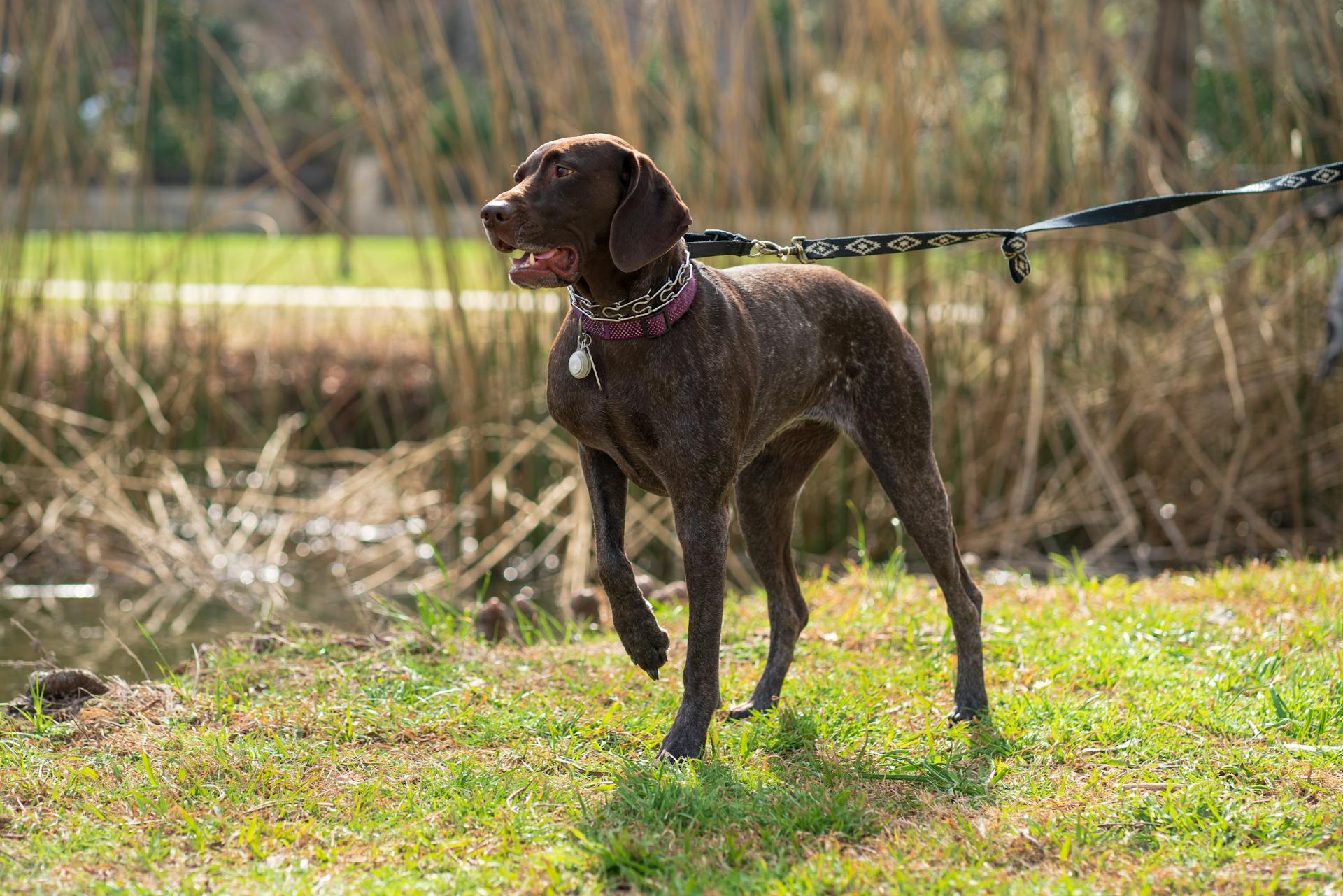
Living with kids and pets can be a wonderful experience, but it's essential to be aware of the potential risks. Children should learn early how to properly approach and play with dogs to avoid injuries.
Pudelpointers, in particular, are strong and medium-sized, which means they can easily hurt smaller children if they're not careful.
However, with proper training and socialization, kids can develop a great bond with their Pudelpointer, making them a fantastic snuggle buddy or emotional support animal.
Introducing other pets to a Pudelpointer requires a slow and calm approach to ensure a smooth transition. Early socialization is key to preventing conflicts between pets.
A Pudelpointer's high prey drive means they might chase smaller dogs, cats, or other critters in the house, but with proper training and socialization, many can get along just fine with other pets.
Breed History and Clubs
The Pudelpointer breed has a rich history that dates back to 1881 when Baron von Zedlitz created the breed by crossing the German Pudel with the English Pointer. This breeding goal was to create a dog that could swim, track scents, retrieve game, and withstand the boom of a gun.
The first Pudelpointers were bred in Germany, but the breed made its way to North America in 1956, thanks to Sigbot "Bodo" Winterhelt, a world-renowned trainer who wanted to establish the breed with traits that would grow stronger with each passing generation.
There are several clubs and organizations dedicated to the Pudelpointer breed, including the Verein Pudelpointer and their Verein Pudelpointer Club Group of North America, as well as the Pudelpointer Club of North America (PCNA), The Canadian American Pudel-pointer Association (CAPA), and The North American Pudelpointer Alliance (NAPPA).
Related reading: American Kennel Club Lancashire Heeler
A Brief History of the Breed
The Pudelpointer breed has a rich history that spans over a century. Developed in Germany by Baron von Zedlitz in 1881, the breed was created by crossing the German Pudel with the English Pointer.
The goal was to create a dog that could excel in various hunting tasks, such as swimming, tracking scents, and retrieving game. This versatility has made the Pudelpointer a sought-after breed for hunting enthusiasts.
In 1956, Sigbot "Bodo" Winterhelt brought the Pudelpointer to North America, where it was introduced to the hunting community. Winterhelt was a world-renowned trainer who wanted to establish the breed with traits that would grow stronger with each passing generation.
The Pudelpointer was admitted to the American Kennel Club's Foundational Stock Service Group in 2004, marking a significant milestone in its recognition as a distinct breed.
Clubs
The Pudelpointer has a strong presence in clubs around the world. There are several clubs dedicated to the breed, including the Verein Pudelpointer and their Verein Pudelpointer Club Group of North America in Germany and North America respectively.
The Verein Pudelpointer is not the only club of its kind, as there are also Pudelpointer clubs in Austria and France. In North America, there are three associations for the breed: The Pudelpointer Club of North America, The Canadian American Pudel-pointer Association, and The North American Pudelpointer Alliance.
Intriguing read: Pit Bulls in North Carolina
These clubs work together to promote the breed and maintain certain breeding standards. The North American Pudelpointer Alliance is a bit different, as it's an alliance of Pudelpointer breeders who test their dogs in NAVHDA and agree to maintain those breeding standards.
Craig Koshyk and Lisa Trottier, two experienced hunters, have written about the pointing breeds, including the Pudelpointer. They've traveled extensively, hunting with various breeds, and have published several books on the subject.
Quick Facts and Overview
The Pudelpointer breed is a unique and fascinating mix of Poodle and English Pointer characteristics. They originated in Germany in the 19th century.
Here are some key facts about the Pudelpointer breed:
- Height: 18-24 inches
- Weight: 40-70 pounds
- Breed Group: Not recognized by major kennel clubs (mixed breed)
- Lifespan: 12-16 years
- Coat: Curly, wavy, or wiry, with colors including brown, white, black, liver, apricot, and various combinations
- Temperament: Intelligent, energetic, loyal, affectionate, playful, good with children and other pets
- Exercise Needs: High – daily walks, playtime, mental stimulation, thrives on outdoor activities
- Training: Moderately easy to train
- Health: Potential concerns include hip dysplasia, elbow dysplasia, ear infections, skin allergies
The Pudelpointer is a versatile breed that excels in hunting and retrieving. They are also great companions for active families. With their high energy levels and strong prey drive, they require regular exercise and mental stimulation to prevent boredom and destructive behavior.
Here are some key characteristics of the Pudelpointer breed:
The Pudelpointer is a loyal and loving breed that requires experienced owners who can provide consistent training and positive reinforcement. With their intelligence and high energy levels, they are best suited for active families who can provide the necessary exercise and mental stimulation.
Frequently Asked Questions
What breed is similar to a Pudelpointer?
Similar breeds to Pudelpointers include German Wirehaired Pointers and Wirehaired Pointing Griffons, which share physical characteristics with Pudelpointers. These breeds are often confused with Pudelpointers due to their similar appearance.
How many Pudelpointers are there?
There are approximately 200 Pudelpointers in the United States, making them a rare breed.
Are Pudelpointers soft?
Pudelpointers can have a soft coat, but it can also be hard to the touch. Their coat type is suitable for hot climates and active lifestyles.
Featured Images: pexels.com
